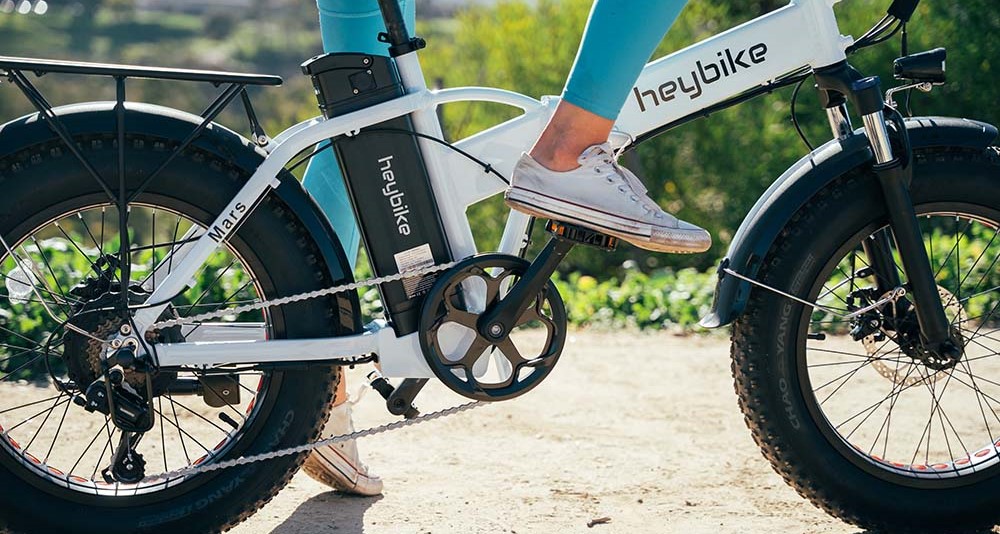Pedal-assist systems on E-Bikes
Pedal-assist systems have become an integral part of modern electric bikes, providing riders with a more natural and intuitive riding experience. These systems use sensors to detect the rider's pedaling effort and automatically adjust the motor's power output accordingly. The two main types of sensors used in pedal-assist systems are cadence sensors and torque sensors. This article will explore the differences between these sensors, their working principles, and their impact on the overall e-biking experience.
Short answer: Pedal-assist systems in e-bikes use either cadence sensors or torque sensors to detect the rider's pedaling effort and control the motor's power output. Cadence sensors measure the pedaling speed and are simpler and more affordable, while torque sensors measure the actual force applied to the pedals and provide a more natural and responsive riding experience. The choice between cadence and torque sensors depends on factors such as riding style, terrain, budget, and personal preferences.
- What is a Pedal-Assist System?
- Cadence Sensors
- Torque Sensors
- Cadence vs. Torque Sensors: A Comparison
- Hybrid Pedal-Assist Systems
- Factors to Consider When Choosing a Pedal-Assist System
- Maintaining and Troubleshooting Pedal-Assist Systems
- Pedal-Assist System FAQ
What is a Pedal-Assist System?

A pedal-assist system, also known as pedelec (pedal electric cycle), is an essential component of modern e-bikes that provides electric motor assistance while the rider is pedaling. The system uses sensors to detect the rider's pedaling effort and sends signals to the e-bike's controller, which then adjusts the motor's power output accordingly. This results in a more natural and intuitive riding experience, as the motor's assistance is proportional to the rider's effort.
Pedal-assist systems typically offer several levels of assistance, allowing riders to choose the amount of support they receive from the motor. Lower assistance levels require more physical effort from the rider but provide longer battery life, while higher levels offer more powerful assistance but may drain the battery more quickly.
Cadence Sensors
Cadence sensors are the simpler and more affordable type of sensor used in pedal-assist systems. They measure the pedaling speed, or cadence, and provide motor assistance based on the number of revolutions per minute (RPM) of the pedals. Cadence sensors typically consist of a magnet attached to the crank arm and a sensor mounted on the frame near the bottom bracket.
As the rider pedals, the magnet passes by the sensor, generating a signal that is sent to the e-bike's controller. The controller then activates the motor, providing assistance at a predetermined level based on the cadence. Cadence-based pedal-assist systems offer a simple and reliable way to control the motor's output, but they may not provide the most natural or responsive riding experience.
One limitation of cadence sensors is that they do not measure the actual force applied to the pedals. This means that the motor's assistance may not always match the rider's effort, especially when riding uphill or against strong headwinds. In such situations, the rider may need to shift to a lower gear or increase their pedaling speed to maintain the desired level of assistance.
Torque Sensors

Torque sensors, also known as strain gauges, are more advanced and expensive than cadence sensors. They measure the actual force applied to the pedals and provide motor assistance proportional to the rider's effort. Torque sensors are typically integrated into the crank arm or bottom bracket and consist of strain gauges that detect the deformation caused by the rider's pedaling force.
When the rider applies force to the pedals, the strain gauges generate an electrical signal proportional to the applied torque. This signal is sent to the e-bike's controller, which then adjusts the motor's power output accordingly. Torque-based pedal-assist systems provide a more natural and responsive riding experience, as the motor's assistance closely matches the rider's effort.
One advantage of torque sensors is that they can provide assistance at lower pedaling speeds, making it easier for riders to tackle hills or accelerate from a standstill. Additionally, torque sensors can help conserve battery life, as the motor only provides assistance when the rider is actively applying force to the pedals.
Cadence vs. Torque Sensors: A Comparison
| Aspect | Cadence Sensors | Torque Sensors |
|---|---|---|
| Working Principle | Measure pedaling speed (RPM) | Measure pedaling force (torque) |
| Riding Experience | Simple and reliable, but may not always match rider effort | Natural and responsive, assistance proportional to rider effort |
| Assistance at Low Speeds | May require higher pedaling speed for assistance | Can provide assistance at lower pedaling speeds |
| Battery Efficiency | May consume more battery due to continuous assistance | Can help conserve battery by providing assistance only when needed |
| Complexity and Cost | Simpler design, more affordable | More advanced technology, higher cost |
Hybrid Pedal-Assist Systems
Some e-bikes feature hybrid pedal-assist systems that combine both cadence and torque sensors. These systems aim to provide the best of both worlds by offering the simplicity and affordability of cadence sensors while also incorporating the natural and responsive feel of torque sensors.
In a hybrid system, the cadence sensor is typically used to detect when the rider starts pedaling and to provide initial assistance. The torque sensor then takes over, measuring the rider's pedaling force and adjusting the motor's output accordingly. This combination can result in a more refined and efficient pedal-assist experience, although the specific implementation may vary between e-bike models and manufacturers.
Factors to Consider When Choosing a Pedal-Assist System
When selecting an e-bike or upgrading your existing pedal-assist system, consider the following factors:
Riding Style and Terrain: If you frequently ride in hilly or challenging terrain, a torque sensor may provide a more natural and responsive riding experience. For flatter routes or casual riding, a cadence sensor may suffice.
Budget: Cadence sensors are generally more affordable than torque sensors. Consider your budget and prioritize the features that matter most to you.
Battery Efficiency: If maximizing battery life is a priority, a torque sensor may help conserve energy by providing assistance only when needed.
Personal Preference: Some riders may prefer the simplicity of cadence sensors, while others may value the natural feel of torque sensors. Test-ride e-bikes with different pedal-assist systems to determine your preference.
Maintaining and Troubleshooting Pedal-Assist Systems
To ensure optimal performance and longevity of your pedal-assist system, follow these maintenance tips:
- Keep the sensor and surrounding area clean and free from debris;
- Regularly inspect the sensor and wiring for signs of damage or wear;
- Ensure the sensor is properly aligned and securely attached to the frame or crank arm;
- Follow the manufacturer's guidelines for battery care and charging to maintain the overall health of your e-bike's electrical system.
If you experience issues with your pedal-assist system, such as intermittent or lack of assistance, consider the following troubleshooting steps:
- Check the battery level and ensure it is properly connected and charged;
- Inspect the sensor and wiring for any visible damage or loose connections;
- Ensure the sensor is correctly aligned and the magnet (for cadence sensors) is properly positioned;
- Consult your e-bike's manual or contact the manufacturer for specific troubleshooting advice or professional assistance.
Pedal-Assist System FAQ
Can I retrofit my traditional bike with a pedal-assist system?
While it is possible to convert a traditional bike into an e-bike using a pedal-assist conversion kit, it is essential to ensure that the kit is compatible with your bike's frame, bottom bracket, and other components. Additionally, the conversion process may require technical skills and specialized tools. It is often more practical and cost-effective to purchase a purpose-built e-bike with an integrated pedal-assist system.
Do pedal-assist systems work with all types of e-bike motors?
Pedal-assist systems are compatible with most types of e-bike motors, including hub motors and mid-drive motors. However, the specific implementation and performance may vary depending on the motor type and manufacturer. Mid-drive motors often provide a more natural pedaling experience and better compatibility with torque sensors, while hub motors may be more straightforward to integrate with cadence sensors.
Can I adjust the sensitivity of my pedal-assist system?
Some e-bikes offer adjustable sensitivity settings for their pedal-assist systems, allowing riders to customize the responsiveness of the motor to their pedaling effort. This can be particularly useful for torque sensors, as riders may prefer different levels of assistance based on their riding style or terrain. However, the availability and range of sensitivity adjustments may vary between e-bike models and manufacturers.
Pedal-assist systems on E-Bikes: Conclusion
Pedal-assist systems have revolutionized the way e-bikes provide power assistance to riders, offering a more natural and intuitive riding experience. By using cadence or torque sensors to detect the rider's pedaling effort, these systems can automatically adjust the motor's output, making it easier to tackle hills, headwinds, and longer distances.
Understanding the differences between cadence and torque sensors, as well as their respective advantages and limitations, can help riders make informed decisions when choosing an e-bike or upgrading their existing pedal-assist system. Factors such as riding style, terrain, budget, and personal preferences should all be considered when selecting the most suitable sensor type.
As e-bike technology continues to advance, we can expect to see further improvements in pedal-assist systems, including more efficient sensors, seamless integration with e-bike motors, and enhanced customization options for riders. By staying informed about these developments and properly maintaining their pedal-assist systems, riders can enjoy the full benefits of electric cycling and make the most of their e-biking experiences.
You may also like:
